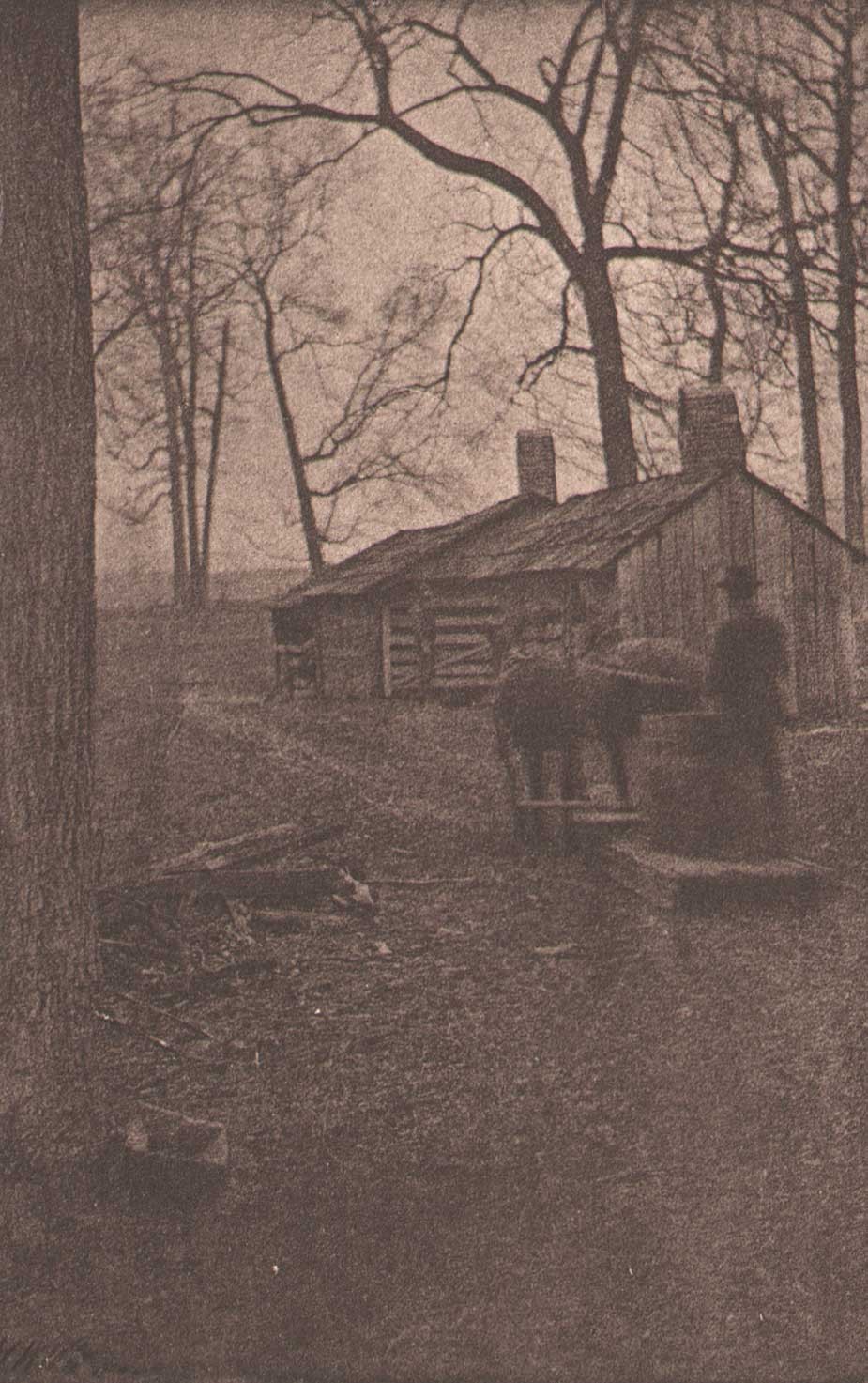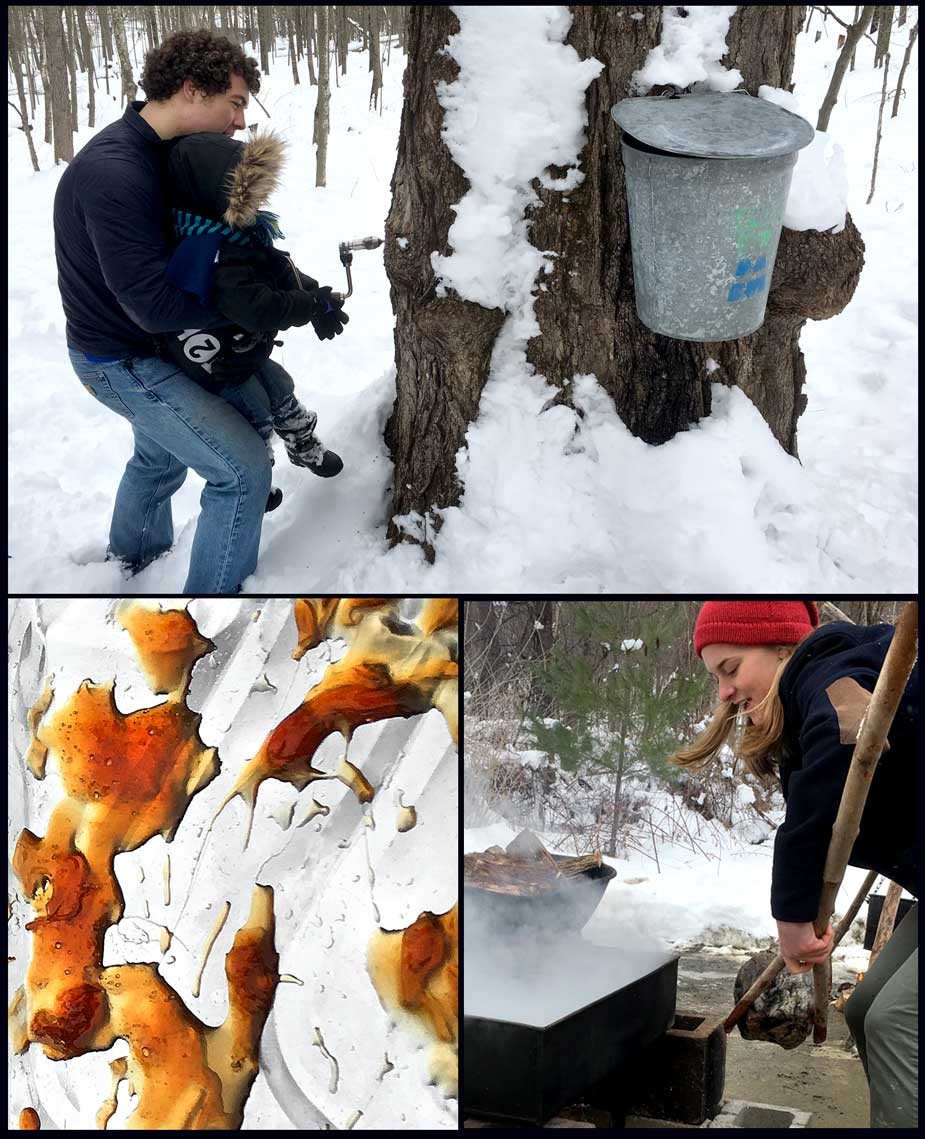“Of all that long season of snow, I remember most pleasantly the days that were sweetened with the sugar-making. When the sun was lifting his course in the clearing sky, and March had got the temper of the lamb, and the frozen pulses of the forest had begun to stir, the great kettle was mounted in the yard and all gave a hand to the washing of spouts and buckets.

“The Sugar Camp”: Clarence H. White, American: 1903: vintage hand-pulled photogravure. 12.2 x 7.7 | 20.0 x 13.9 cm. A team of horses pulls a wooden sled guided by a sugar camp worker and carrying a barrel of tree sap to a sugar shack in the distance. The gravure was included in a special edition of the best selling novel Eben Holden written by Irving Bacheller. PhotoSeed Archive
Then came tapping time, in which I helped carry the buckets and tasted the sweet flow that followed the auger’s wound. The woods were merry with our shouts, and, shortly, one could hear the heart-beat of the maples in the sounding bucket. It was the reveille of spring. Towering trees shook down the gathered storms of snow and felt for the sunlight. The arch and shanty were repaired, the great iron kettle was scoured and lifted to its place, and then came the boiling. It was a great, an inestimable privilege to sit on the robes of faded fur, in the shanty, and hear the fire roaring under the kettle and smell the sweet odor of the boiling sap.” – Irving Bacheller, from Eben Holden (1.)

An annual harbinger of Spring, Maple Fest was held on the grounds of the 2600-acre Hopkins Memorial Forest located in Williamstown, MA on Saturday, March 10, 2018. The educational and fun event gave visitors the opportunity to experience the collection of maple sap, to its’ being boiled down in a sugar shack to make maple syrup and the experience of tasting it as pure candy solidified after being drizzled onto fresh snow. Top: a young visitor holding a drill is guided by a Williams College student in tapping a sugar maple tree. An old-fashioned metal bucket at right is still used, with 40-50 gallons of sap collected and boiled down to make one gallon of syrup. Left: Amber, crystalline maple syrup is left behind on the bottom of a foil sheet that once held packed snow. Right: Historic evaporation methods to boil down maple sap were demonstrated, with another Williams student carefully maneuvering a hot rock taken from coals that would be transferred to a hollowed-out log- the method Native Americans first used to turn sap into syrup. All: David Spencer for PhotoSeed Archive
1. Eben Holden: Chapter VIII: Boston, Lothrop Publishing Company: 1903: p. 95



